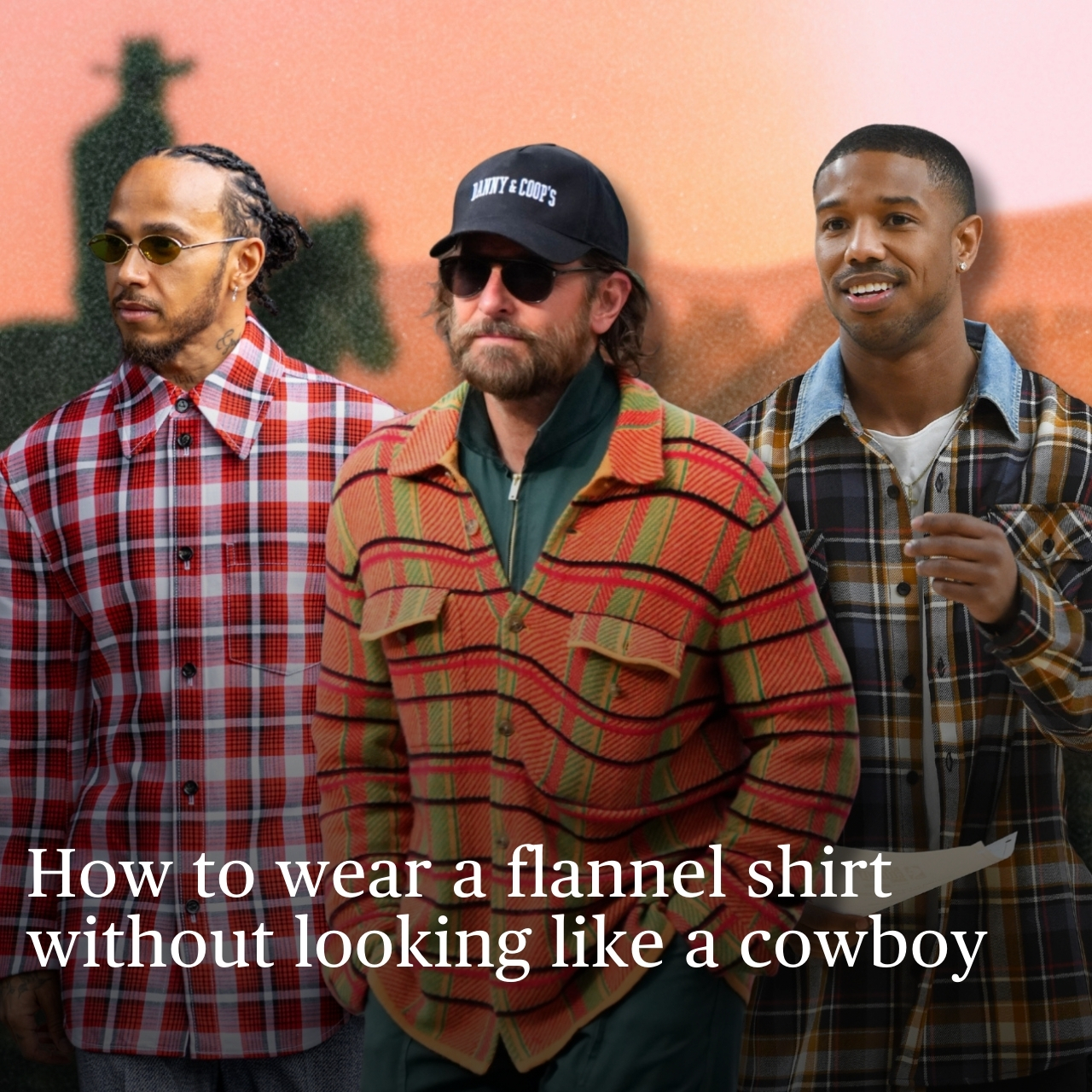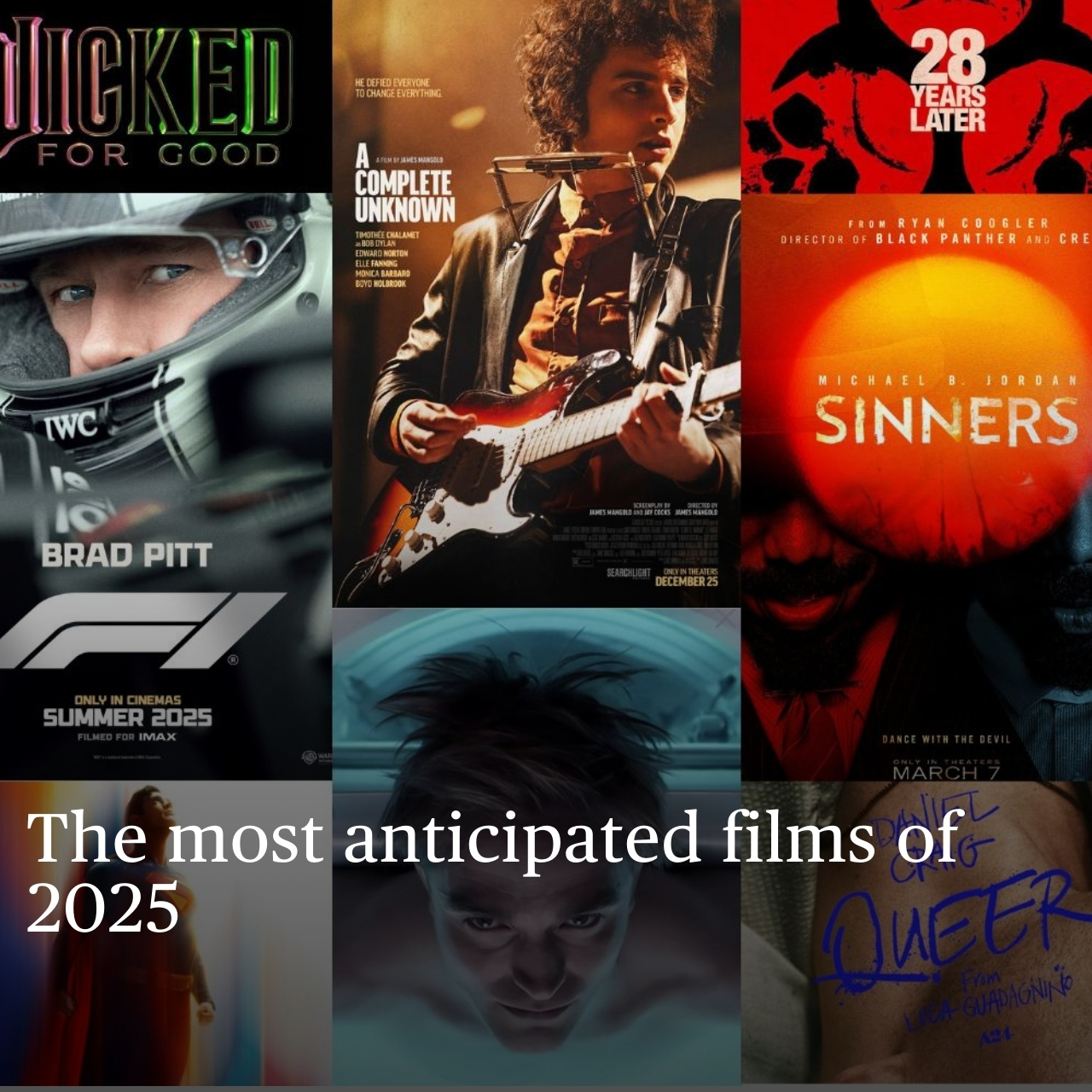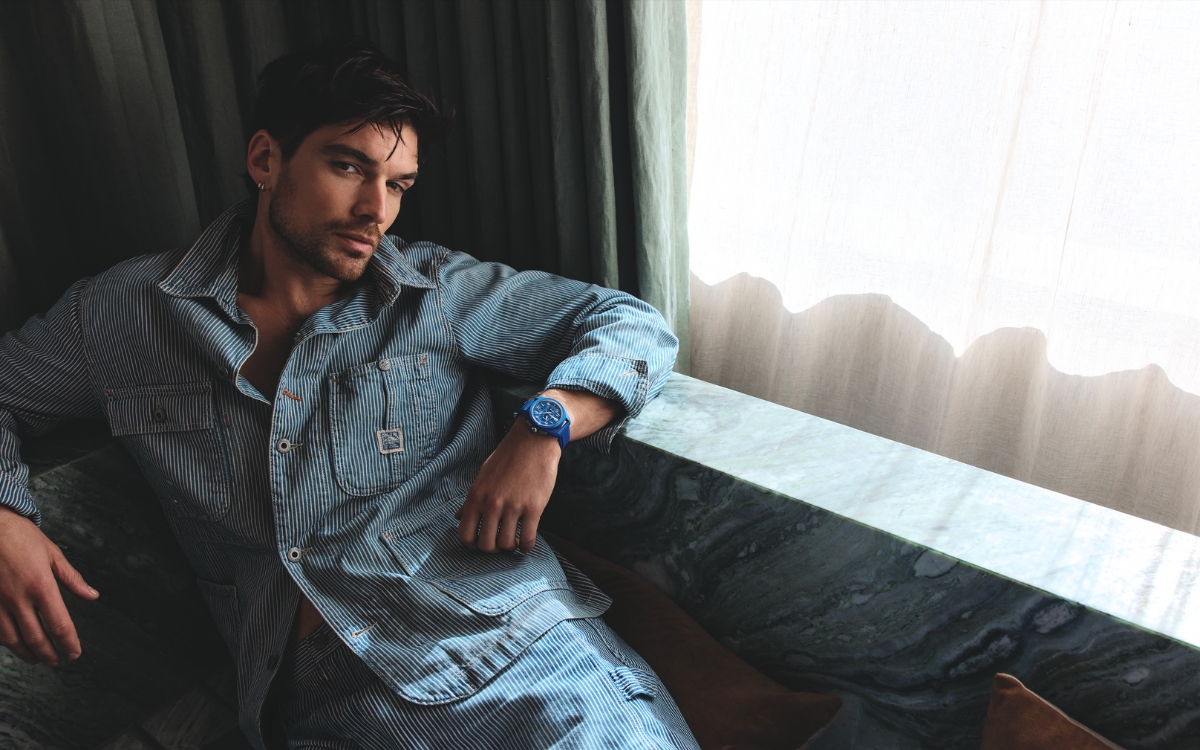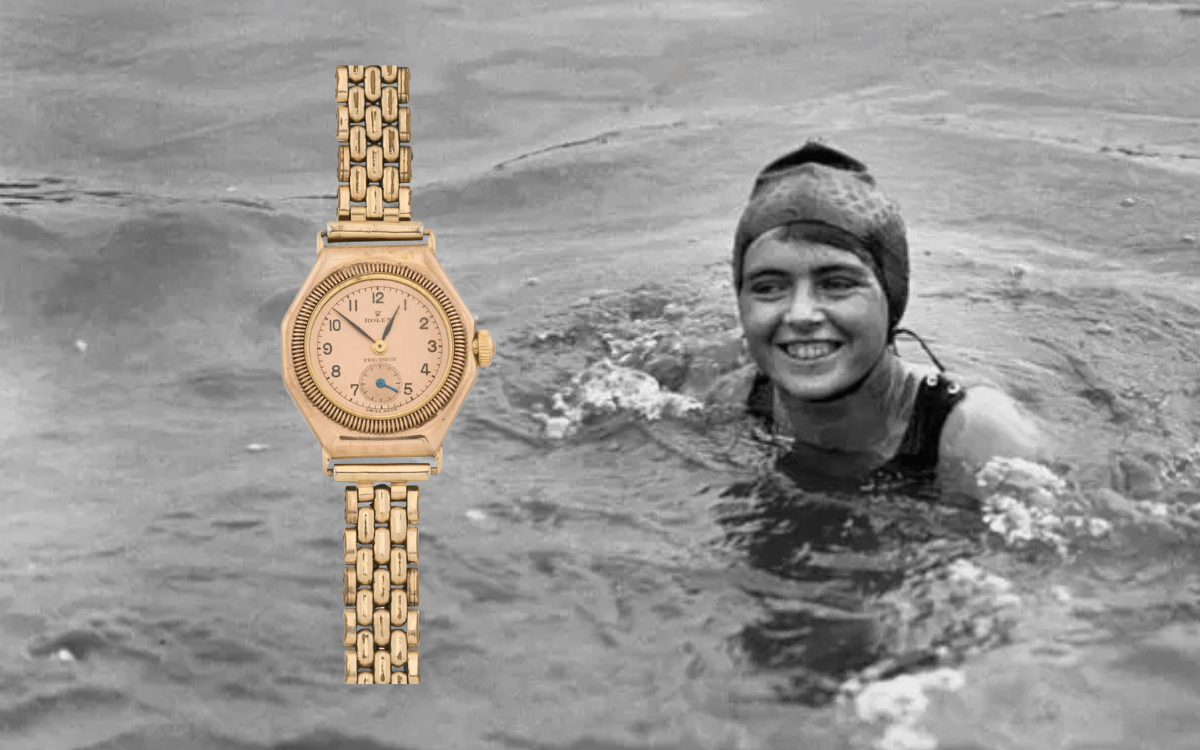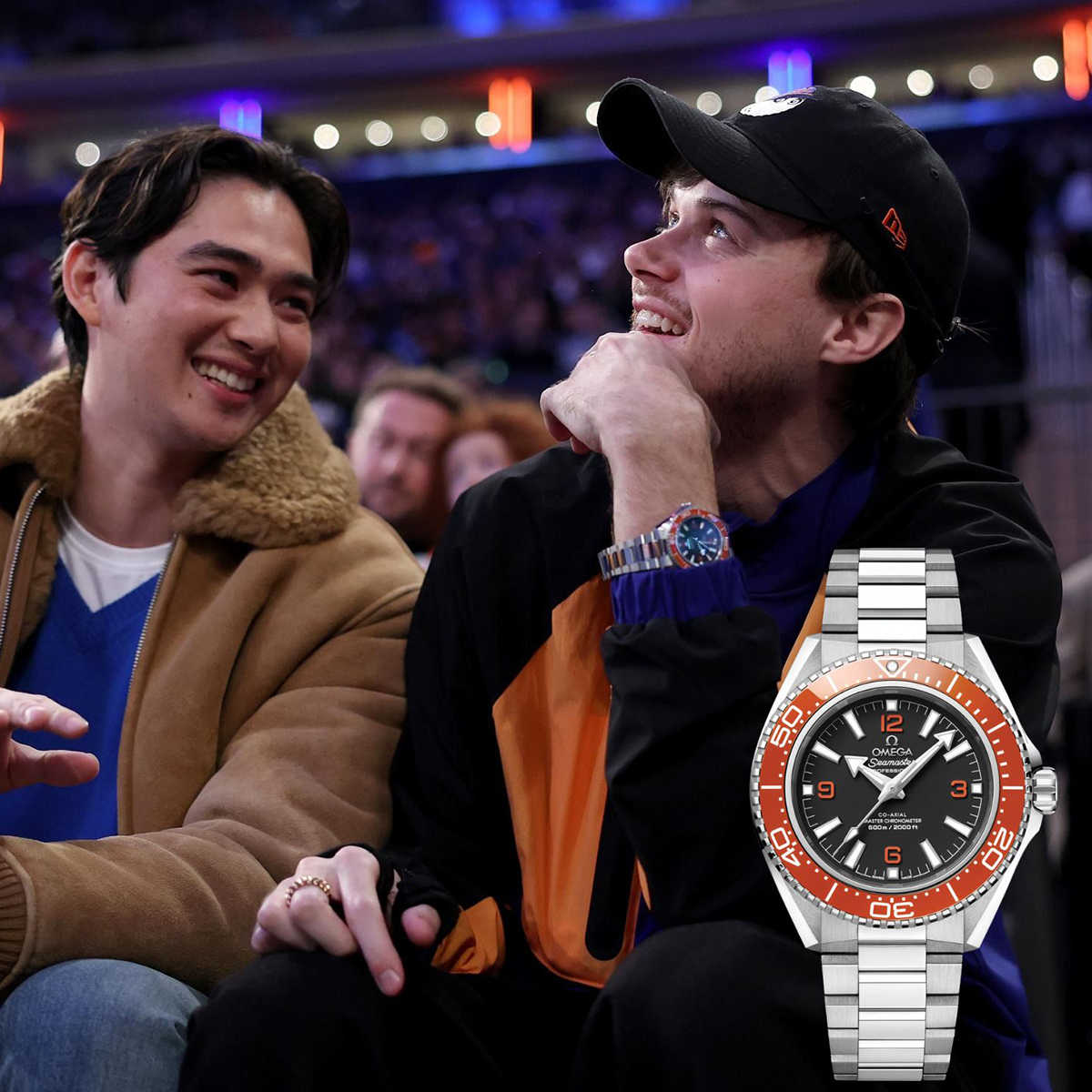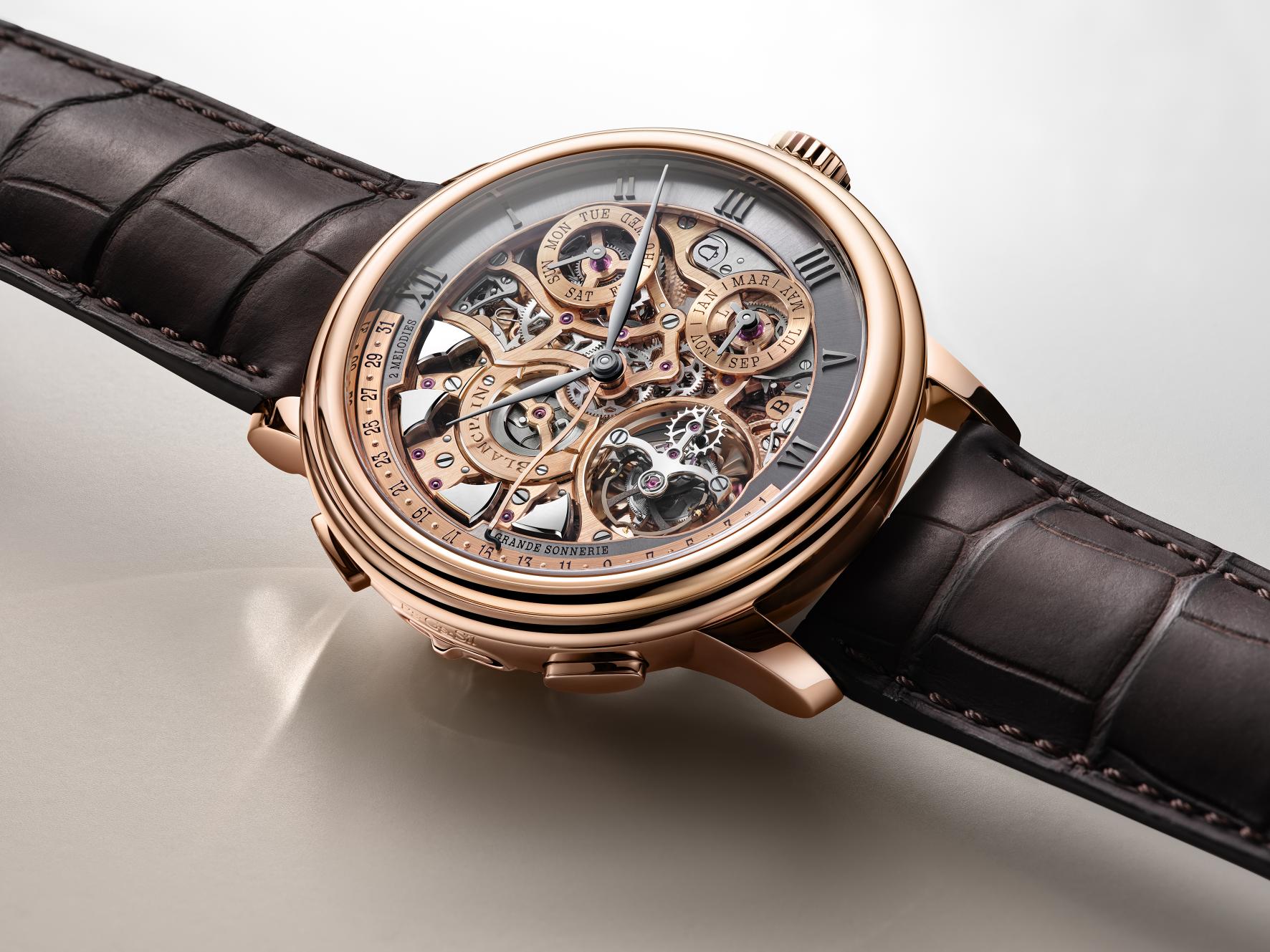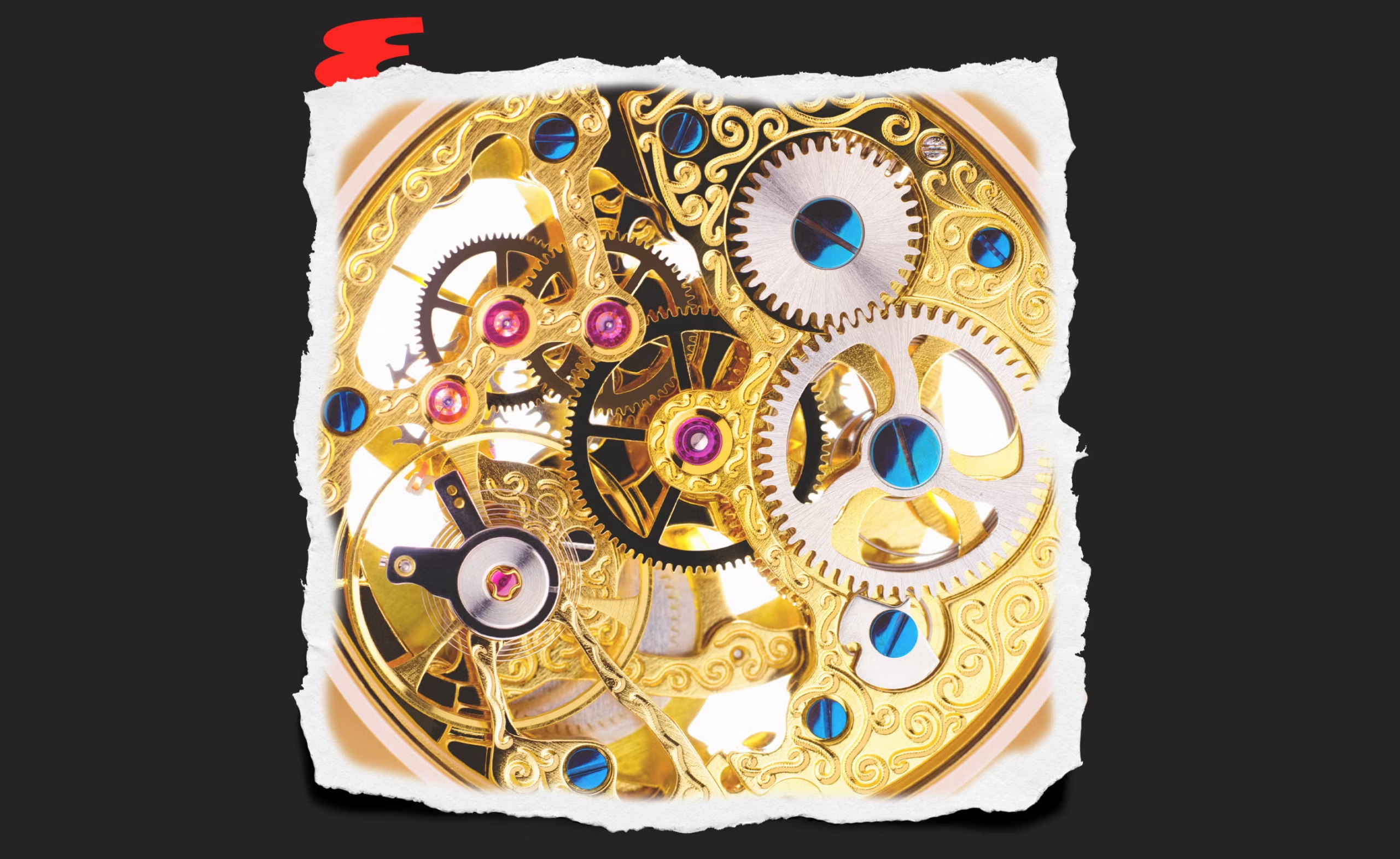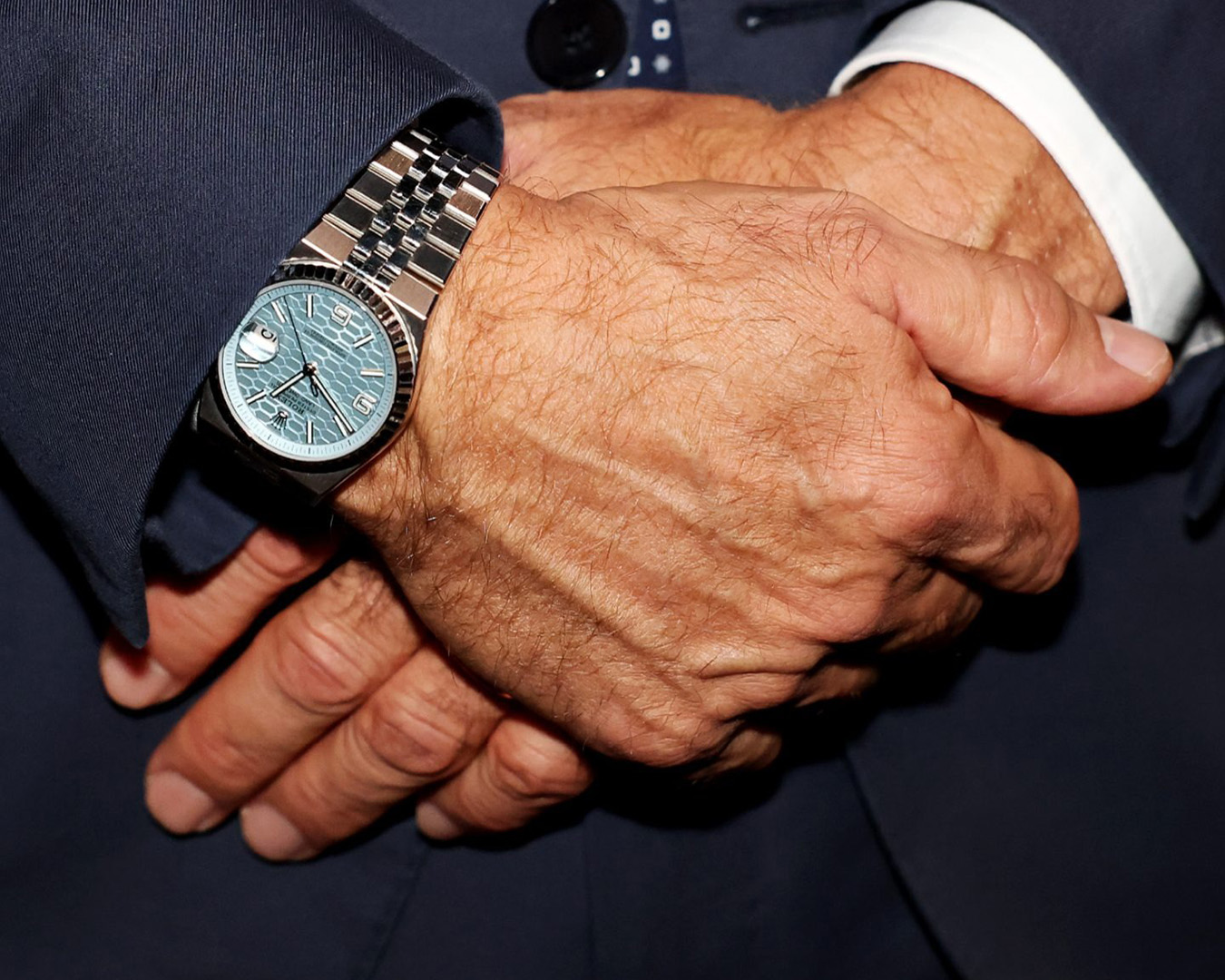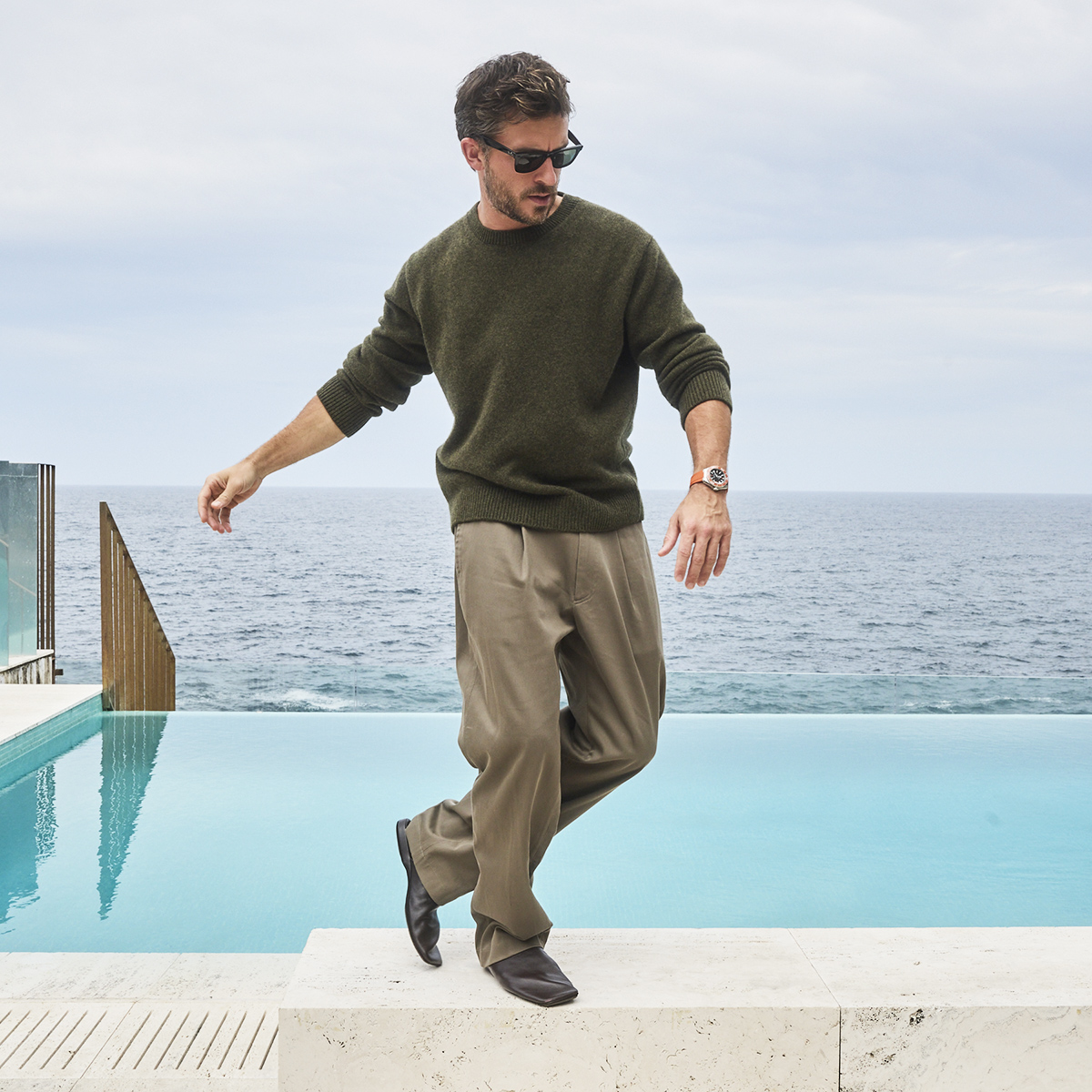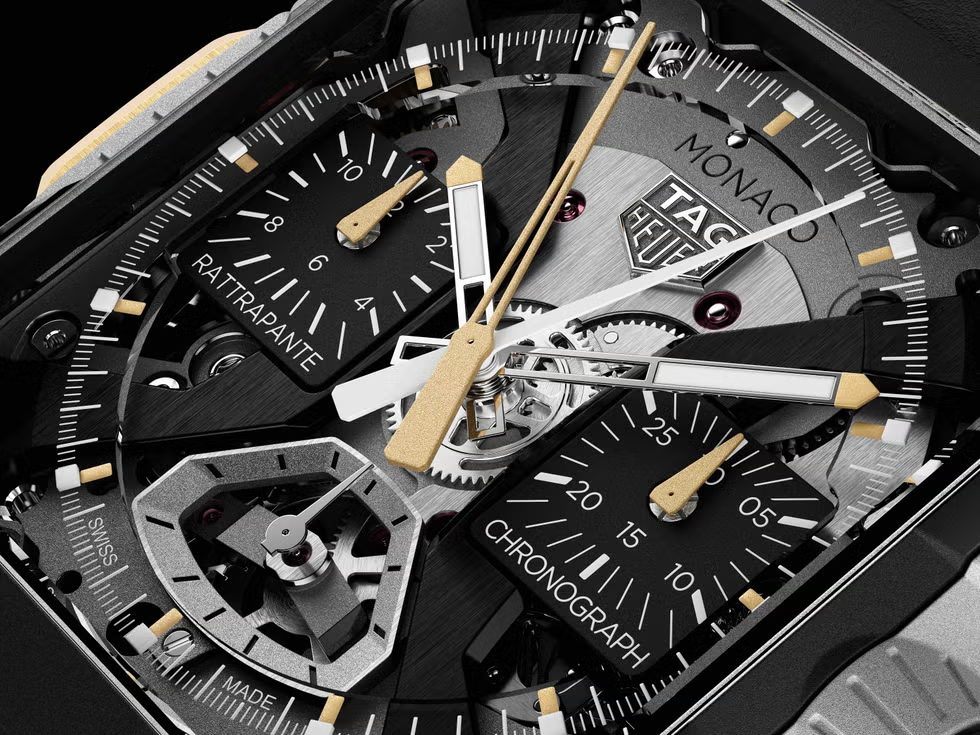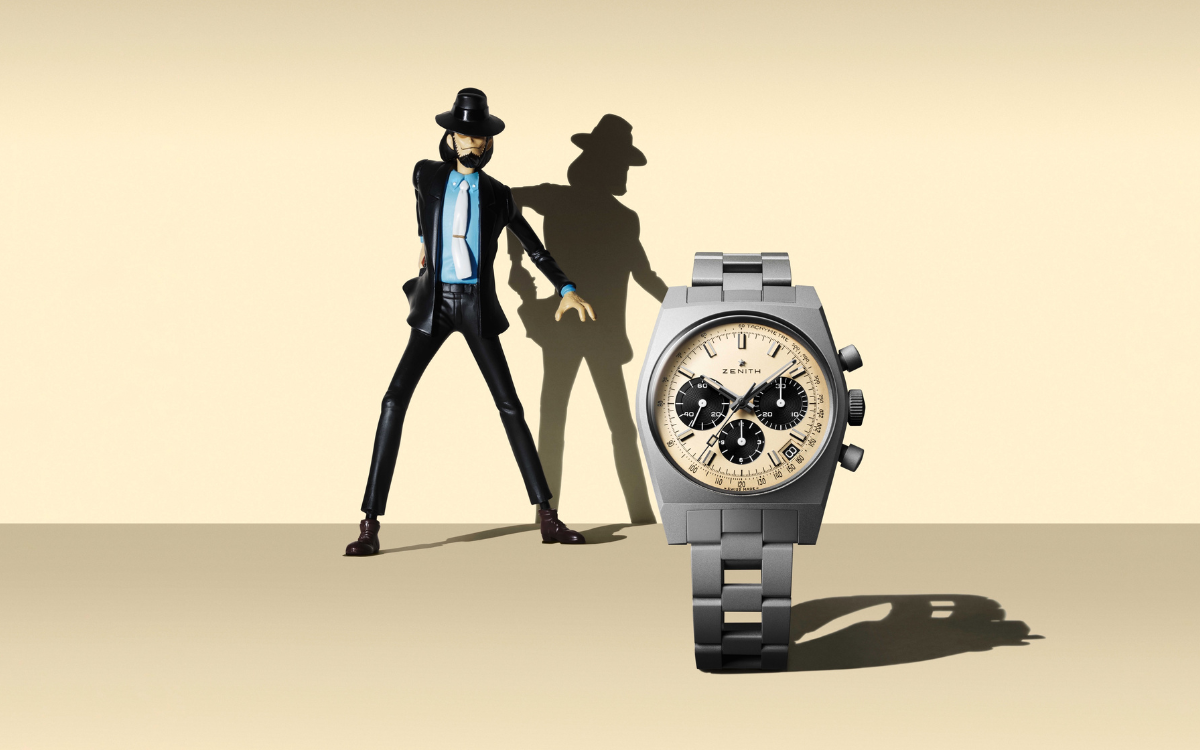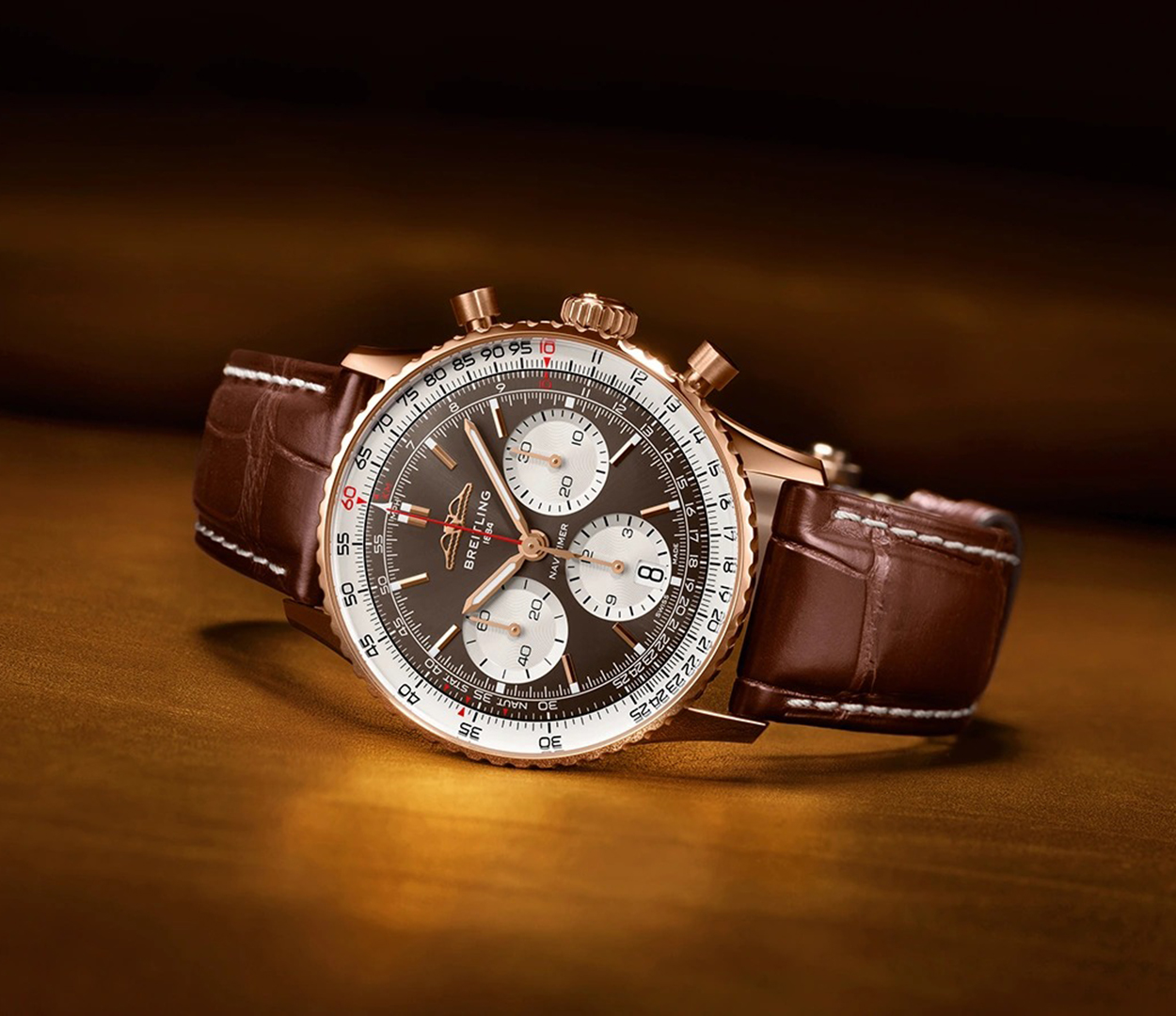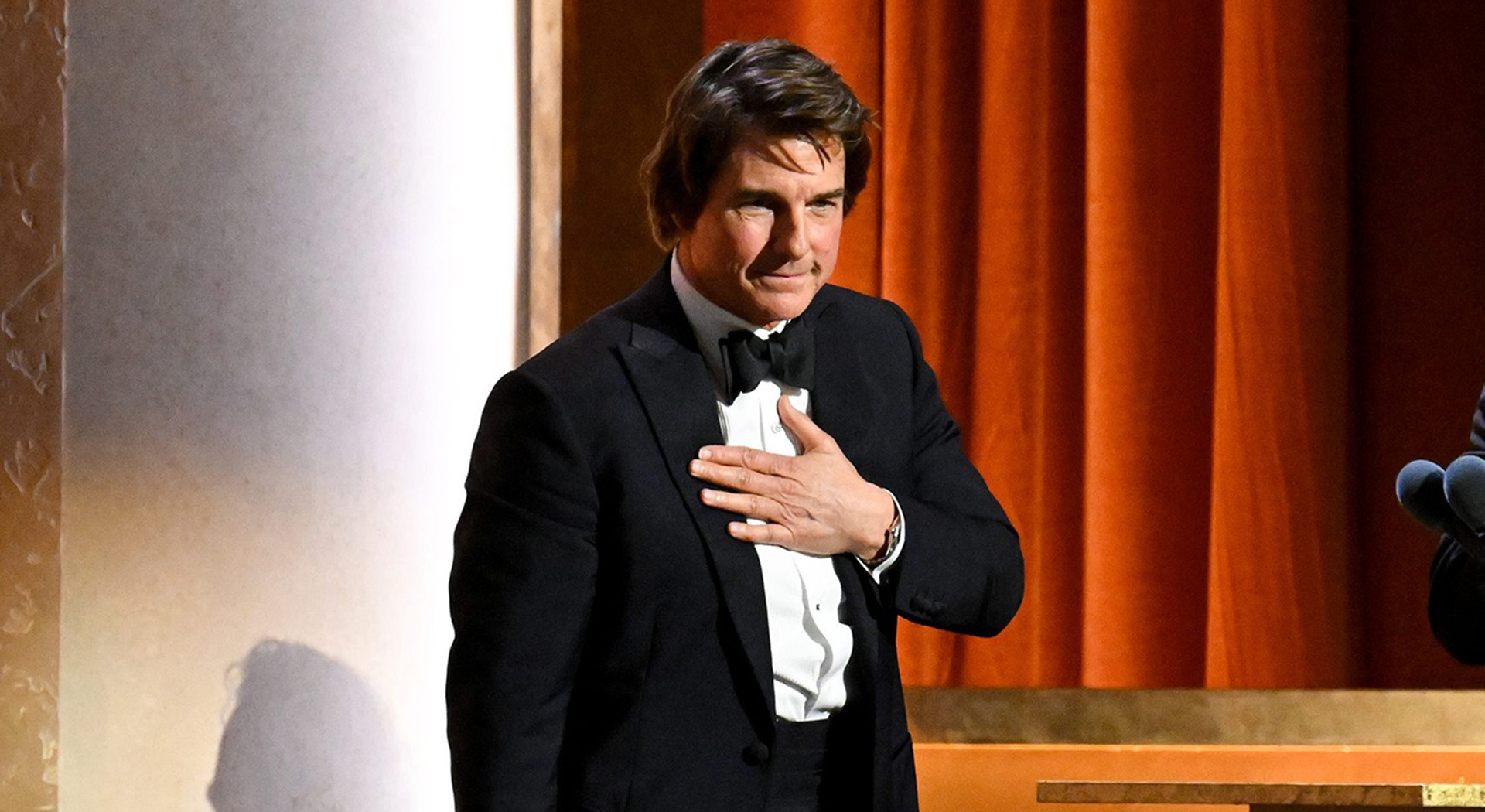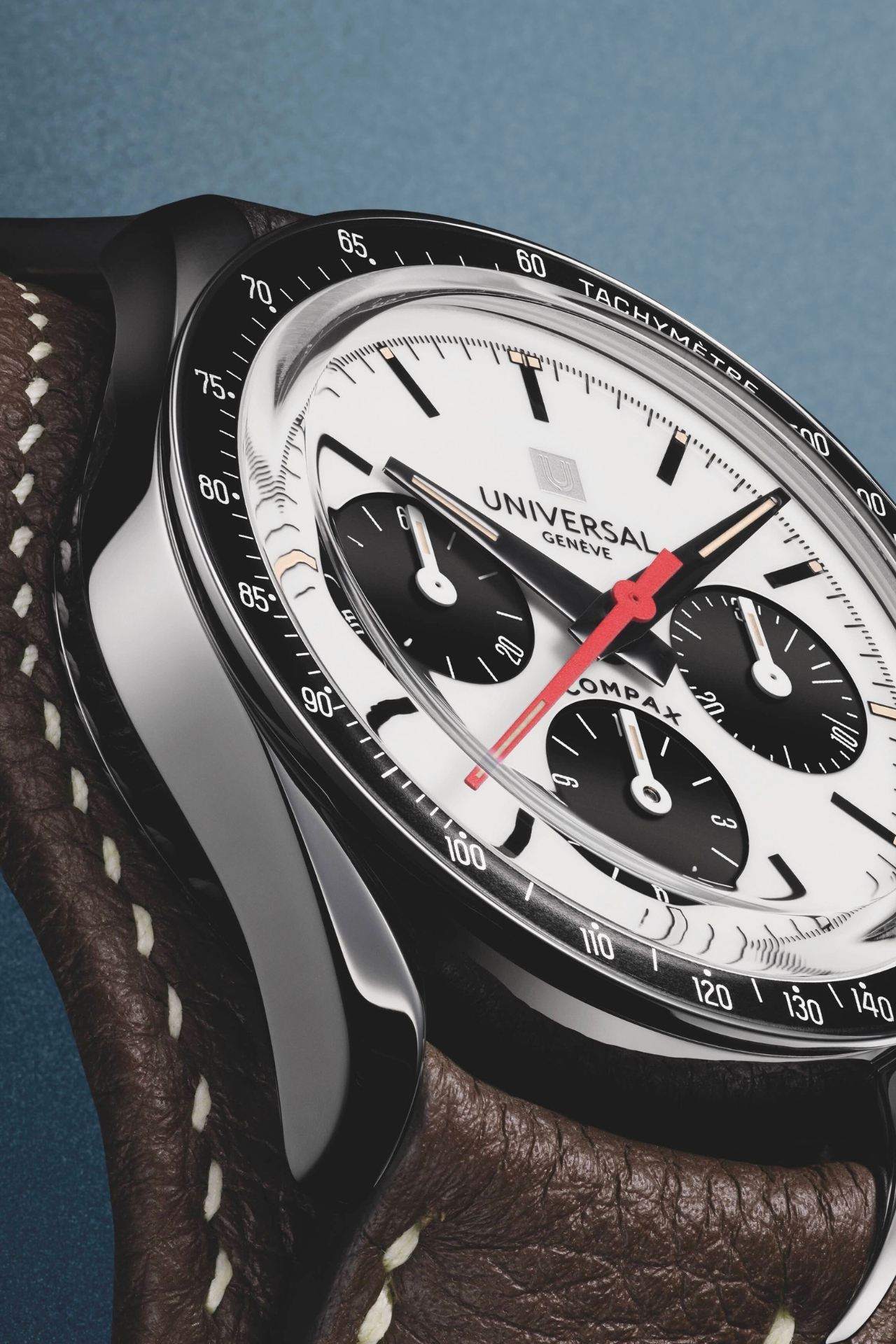Time well spent: Jackson Gallagher on searching for inspiration
The actor, photographer and student of humanity talks finding inspiration in Japan, the throughline between his artistic pursuits and the value of time
WHEN JACKSON GALLAGHER sits down with Esquire, he’s just returned from a holiday in Japan that was both a chance to unwind from his busy filming schedule and a source of inspiration.
“It was great, man – I’d highly recommend it,” he says with an easy grin, still wearing some of the soft haze of jetlag. “I was in Tokyo for a bit, and then I went down to the art island, Naoshima. It’s really cool, like an old fisherman’s village that’s been turned into amazing contemporary art.”
That description alone says a lot about Gallagher. He’s naturally curious and attentive to the world around him. And he doesn’t just visit a new place; he absorbs it. “There’s this Japanese architect, Tadao Ando, who built these amazing cement bunker-esque galleries,” he continues. “And then there are these phenomenal James Turrell light installations. The way the galleries and the artworks interact with space and texture and light, it’s inspiring.”
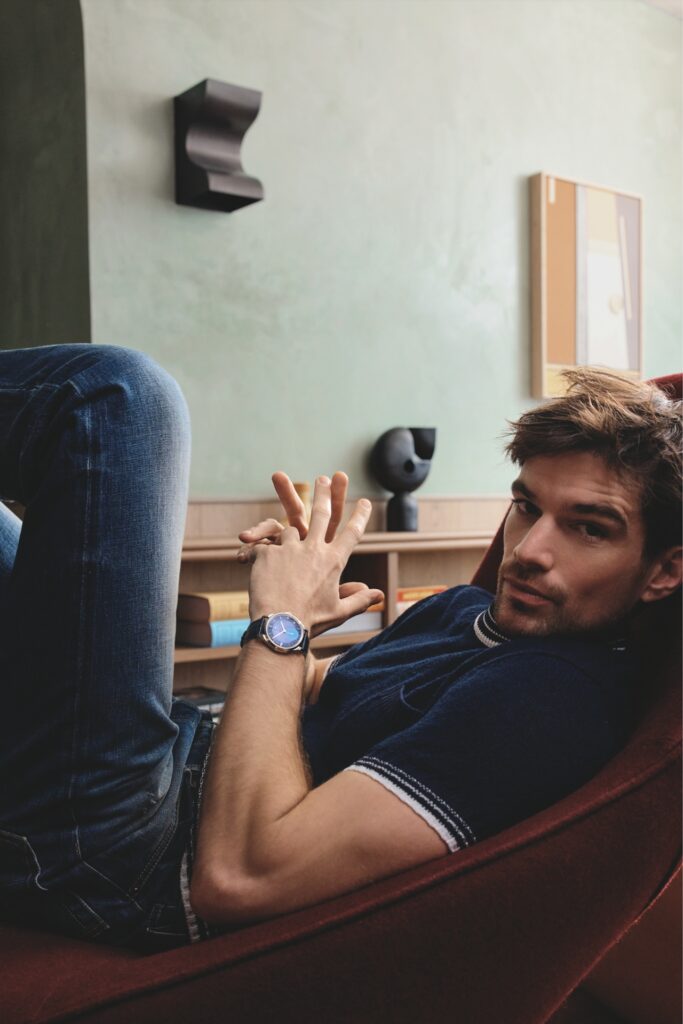
That might sound more like an artist in residency than an actor returning from vacation, but Gallagher has never fit neatly into any single category. “I think there’s a throughline between all those pursuits,” he says when asked if he identifies more as an actor, photographer or simply a creative. “When I look back on the work I’ve done, I can see how I was drawn to different areas at different times, but I also think my interests have informed each other in a way. Like, I started working as a photographer through an acting job, so I feel like the two have always intertwined.”
Gallagher first rose to fame on Home and Away, where he played teenager Josh Barrett from 2013-16. He’s subsequently had roles on series including The Doctor Blake Mysteries, Glitch, Wentworth and Neighbours, and appeared in a handful of films. Next year, Australian audiences will see Gallagher as Julius Caesar in the Starz production Spartacus: House of Ashur. All that followed a 2013 stint as a professional photographer at the ABC – another experience he has built on. “What both those careers have allowed me to do,” he says, “is spend time either as a photographer with other people in their world, in their environments, to absorb and learn, and try and capture that. And then, as a performer, I get to do a similar thing. I get to spend time researching and learning new skills or changing my appearance to be someone else and breathe life into a character that’s lived a different life than I have.”
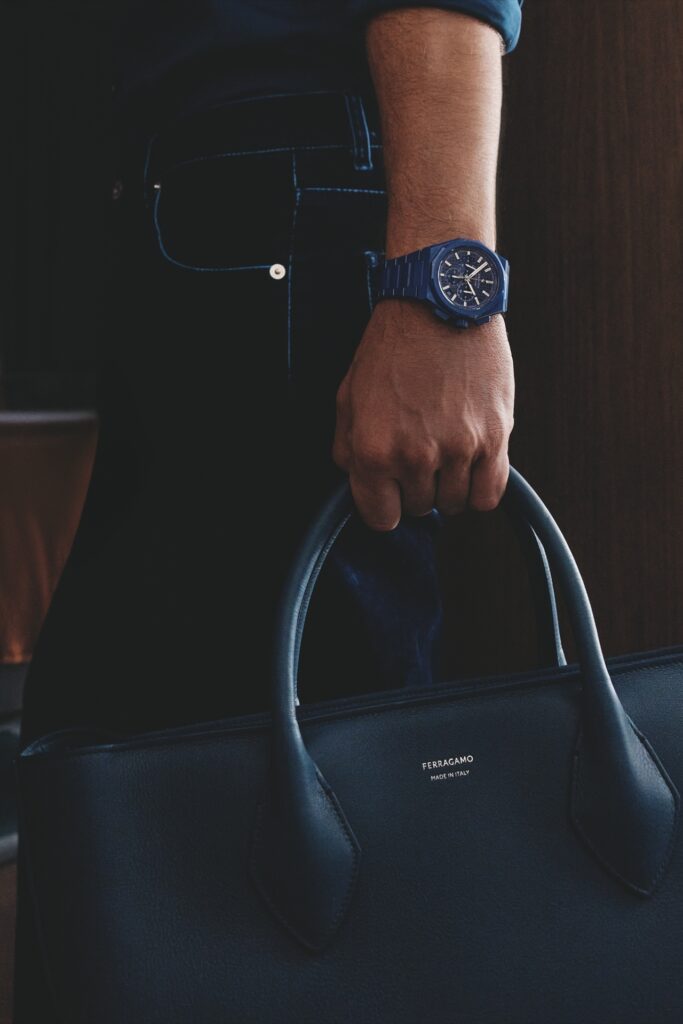
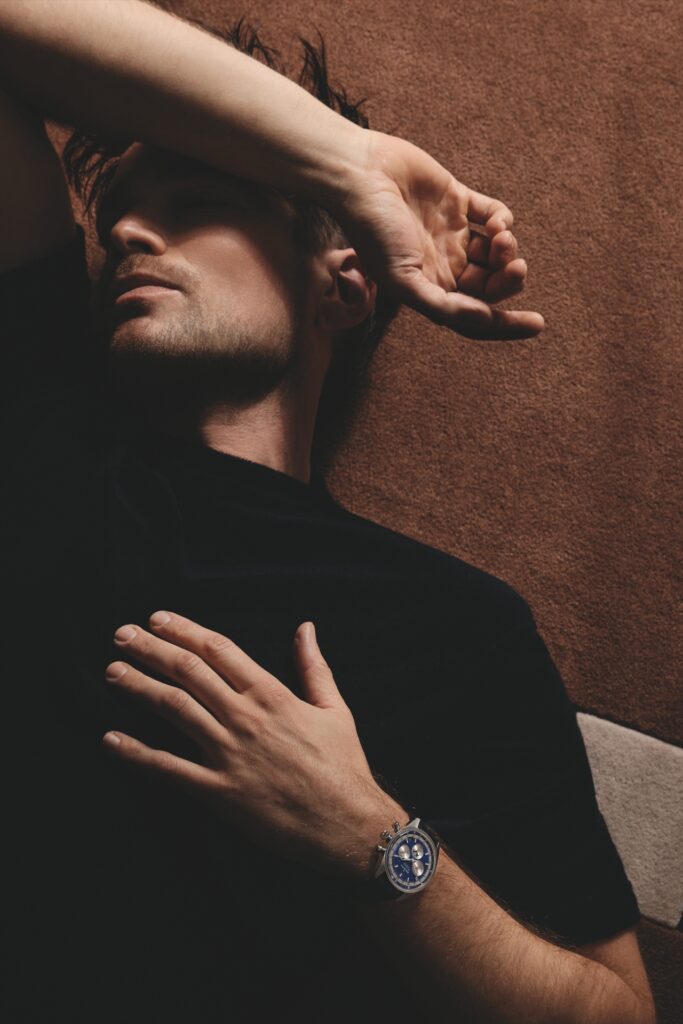
It’s this humanist approach that seems to define Gallagher’s creative ethos. “What I’m realising more and more,” he says, “is that through that interest in other people, you inevitably learn more about yourself.”
Gallagher carries himself with an air of thoughtfulness. There’s usually a deeper meaning behind most things he does, or wears. Case in point: the Zenith El Primero watch on his wrist, which to him is much more than just an accessory or a way to tell time.
“It is a Zenith,” he says, when I ask about it. “I think they’re really stylish. I like the aesthetic of them. I was drawn to watches that have a diving connection ’cause I’ve done a bit of diving.”
But as he continues, it becomes clear the appeal runs deeper than aesthetics. He asks if I’m familiar with the story of Charles Vermot – a revered Zenith watchmaker from the late 20th century, though not exactly a household name. It’s a question that would have anyone but a hardcore horology enthusiast blanking, but Gallagher follows it up with an in-depth explanation of how Vermot defied company orders by taking apart equipment used in the production of the El Primero and hiding it in an attic as the quartz crisis swept across Europe and mechanical movements fell out of favour. A decade later, when the El Primero movement was once again in demand, Vermot led Zenith back to his secret stash and allowed them to recreate the manufacturing process with ease thanks to his diligent record-keeping and preservation of components.
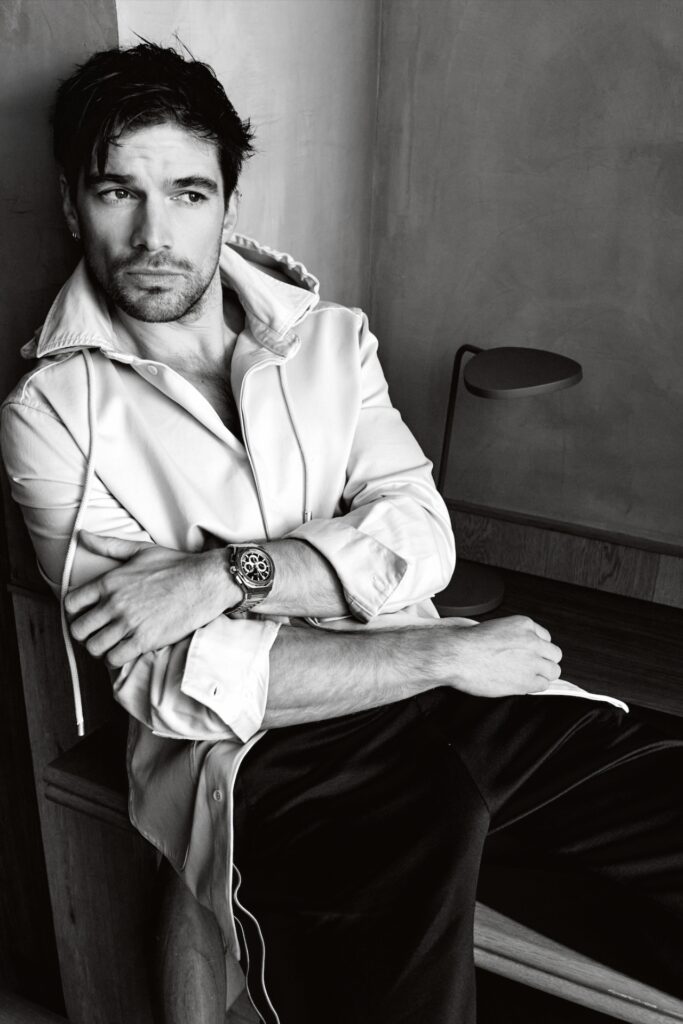
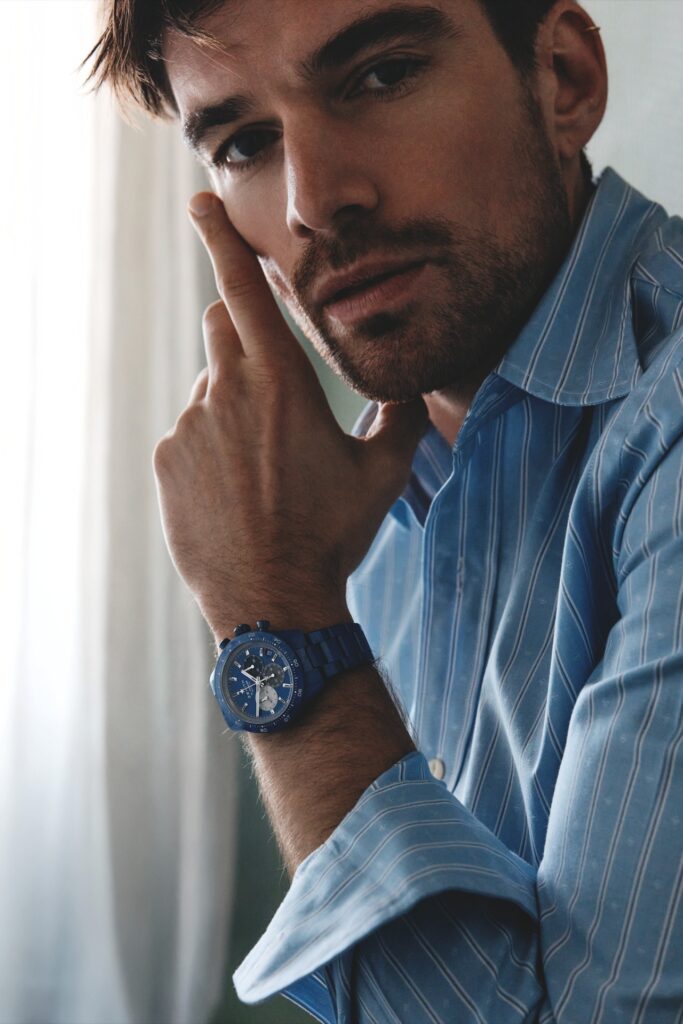
Gallagher finds himself drawn to that story. There’s something about the idea of time, patience and preservation that resonates with him. “I really think time is the most valuable thing we have,” he says. “Wearing a watch is a constant reminder to appreciate time.”
Gallagher’s love of watches is a more recent development, but he remembers his first timepiece. “I think I got it for my tenth birthday. It was just like a Timex or something. It was blue. It had glow-in-the-dark numbers. Classic watch for a 10-year-old.” Still, that early relationship with time led to something deeper.
Asked how he would advise his 10-year-old self, Gallagher needs a moment. “Try not to listen to the external noise,” he says. “We tend to focus on what we don’t have, but I think it’s important to embrace where you are right now and accept that things constantly change – for better or worse – but just appreciate where you’re at and what you do have.”
Spoken like someone who’s learned enough about the world, and himself, to know what matters. Gallagher might be hard to pin down, but whatever he’s doing, he’s paying close attention. And in a world full of distractions, that might be his most impressive trait.
Gallagher is wearing Zenith Pilot Big Date Flyback 160th Anniversary Edition, $24,700 and a shirt jacket and pants by Polo Ralph Lauren in the opening image.
This story appears in the September 2025 issue of Esquire Australia with the title “Time Well Spent”, on sale now. Find out where to buy the issue here.
Photography: Michael Comninus
Styling and Editor-in-Chief: Grant Pearce
Hair: Jaque di Condio
Related:
Up close and personal with Zenith’s standout watches
How a former graffiti kid designed a limited-edition watch for Zenith




